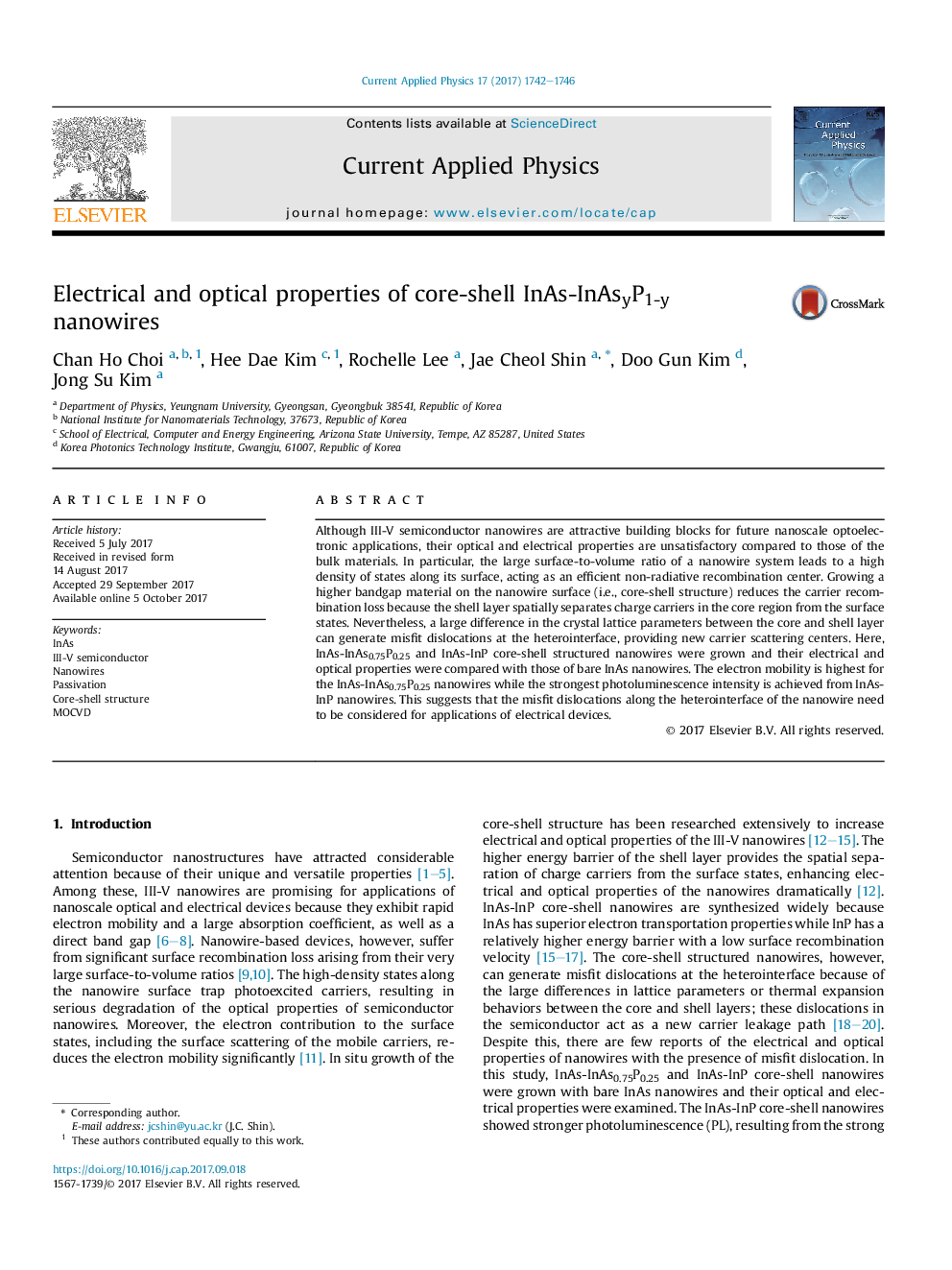| Article ID | Journal | Published Year | Pages | File Type |
|---|---|---|---|---|
| 5488732 | Current Applied Physics | 2017 | 5 Pages |
Abstract
Although III-V semiconductor nanowires are attractive building blocks for future nanoscale optoelectronic applications, their optical and electrical properties are unsatisfactory compared to those of the bulk materials. In particular, the large surface-to-volume ratio of a nanowire system leads to a high density of states along its surface, acting as an efficient non-radiative recombination center. Growing a higher bandgap material on the nanowire surface (i.e., core-shell structure) reduces the carrier recombination loss because the shell layer spatially separates charge carriers in the core region from the surface states. Nevertheless, a large difference in the crystal lattice parameters between the core and shell layer can generate misfit dislocations at the heterointerface, providing new carrier scattering centers. Here, InAs-InAs0.75P0.25 and InAs-InP core-shell structured nanowires were grown and their electrical and optical properties were compared with those of bare InAs nanowires. The electron mobility is highest for the InAs-InAs0.75P0.25 nanowires while the strongest photoluminescence intensity is achieved from InAs-InP nanowires. This suggests that the misfit dislocations along the heterointerface of the nanowire need to be considered for applications of electrical devices.
Related Topics
Physical Sciences and Engineering
Physics and Astronomy
Condensed Matter Physics
Authors
Chan Ho Choi, Hee Dae Kim, Rochelle Lee, Jae Cheol Shin, Doo Gun Kim, Jong Su Kim,
